It’s a hard choice, but as of last go around my favorite restaurant in Germany is in Görlitz.
I know. I know. Located in the easternmost point of Germany along the Neisse River at the Polish frontier, Görlitz is off the beaten path for most tourists.
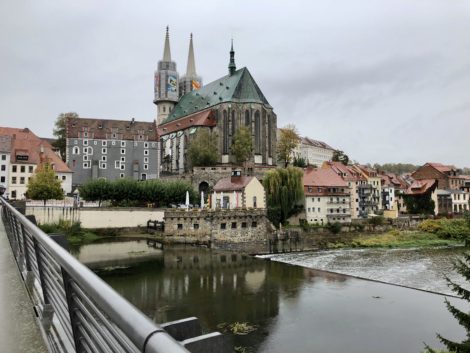
View of Gorlitz and the Neisse River from Poland.
On the other hand, the village is a superhighway destination for the international film crowd, which accounts for the high quality restaurants.
Escaping damage in World War II and destruction under Communism, Görlitz sports about 4,000 historic buildings that range in style from early Gothic to art nouveau.
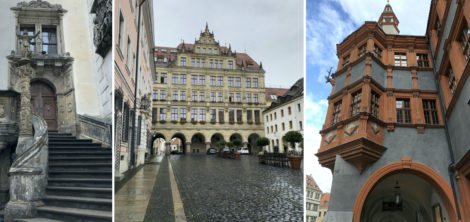
Add cobbled streets, church steeples and towers and the whole village offers a magical wonderland of backdrops and sets for movies.
Earning the stage name “Görliwood,” the town appeared in about 100 movies so far. “The Reader,” “Inglourious Basterds,” “Around the World in 80 Days,” “The Monuments Men,” “The Book Thief” and “The Grand Budapest Hotel,” shot inside a Görlitz now-closed, art nouveau department store, are just a few films that cast Görlitz in starring roles.

If oscars were given to cities, Görlitz would win for best set design and the restaurant Lucie Schulte, would take top honors as best hospitality in a supporting role.
As if scripted to attract a sophisticated international movie crowd, Lucie Schulte’s dining room sits a bit secluded at the side of a lovely courtyard behind the “Whispering Arch,” on the beautiful Untermarkt (lower market square).
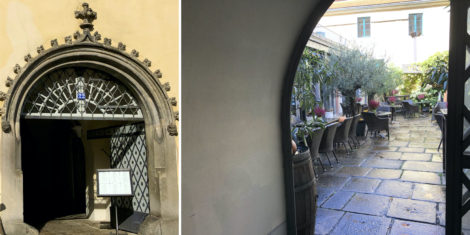
White table clothes, soft lighting, fresh flowers and decorative accessories add allure.
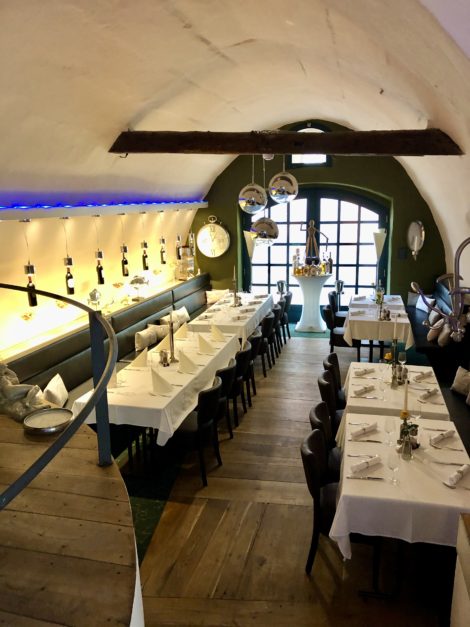
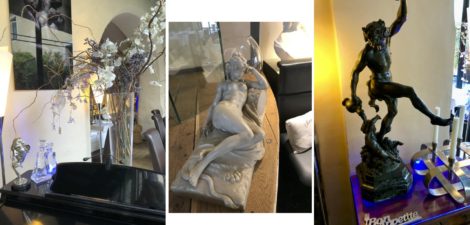
The restaurant’s attractive bar stocks a cornucopia of German as well as international booze and both bar and patio offer charming spots to wait for a table.
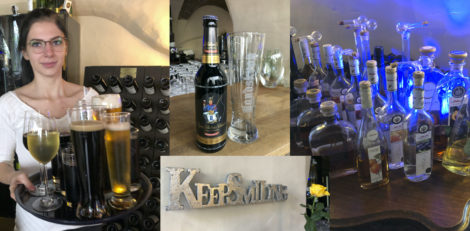
Although all is as pretty as a picture, it’s the food that takes top billing.
The chef showcases his/her unique creation as well as flavorful, sweet and savory international, German, Saxon, regional and local specialities.
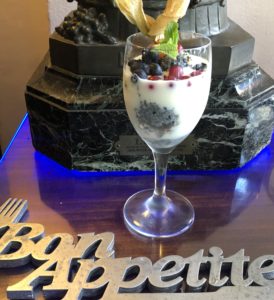 For example, the poppy seed trifle (my name for the dessert as it came at the end of the meal as a surprise and was not named on the menu), represents elements that are both international and distinctly local. Made with French creme anglaise, resembling an English trifle (which we all know is no trifle at all), and resplendent with poppy seeds (I assume from the neighboring Czech Republic, the world’s largest producer of poppy seeds), the desert is both divinely unique and deliciously familiar.
For example, the poppy seed trifle (my name for the dessert as it came at the end of the meal as a surprise and was not named on the menu), represents elements that are both international and distinctly local. Made with French creme anglaise, resembling an English trifle (which we all know is no trifle at all), and resplendent with poppy seeds (I assume from the neighboring Czech Republic, the world’s largest producer of poppy seeds), the desert is both divinely unique and deliciously familiar.
The recipe below is a stand-in for Lucie Schulte’s orginal, which features red currents and physalis. Our recipe substitutes readily available fresh berries and our own interpretation of the custard. As to presentation, you can build the trifle in wine glasses for individual servings or arrange the ingredients in a large glass bowl for one grand dessert.
POPPY SEED TRIFLE
Yield: Four servings.
6 to 8 ounces pound cake, cut into 4 chunks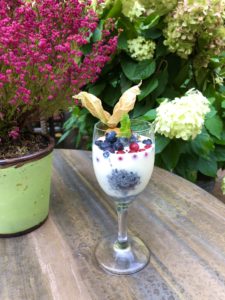
3 tablespoons poppy seeds
Creme Anglaise (see recipe below)
Assorted fresh berries (blueberries, strawberries, raspberries, blackberries)
Mint leaf for garnish, optional
Put a chunk of cake into each of four wine glasses.
Combine poppy seeds with enough creme anglaise to just coat the seeds. Add a spoonful of coated seeds to the bottom of each cup, giving each cup an equal amount.
Pour creme anglaise over cake in each glass, giving each cup an equal amount of creme.
Top as desired with berries.
Garnish with mint, if desired.
CREME ANGLAISE
Yield: About 3 cups.
1 cup 14 tablespoons whole milk or half and half
6 egg yolks
A scant 3/4 cup sugar
1 tablespoons vanilla extract
Put milk in a heavy bottomed enameled or stainless steel saucepan. Set saucepan over medium heat and bring milk just to the boiling point. Meanwhile, put egg yolks in a mixing bowl and beat with electric mixer, very gradually beating in sugar. Continue beating for 2 to 3 minutes until the mixture is pale yellow and forms a ribbon with beaters are lifted.
Very gradually, pour droplets of hot milk into yolk mixture, beating constantly. (You are slowly heating the egg yolks.) Start with droplets, then, as yolks warm, add milk in a droplet like stream.
When all of the milk has been added, pour egg mixture into the saucepan. Set over low moderate heat and cook, stirring constantly with wooden spatula or spoon, until the sauce thickens enough to coat the spoon, about 5 minutes. DO NOT LET MIXTURE SIMMER OR BOIL. When sauce has thickened, remove saucepan from heat. Strain sauce into a bowl. Stir in vanilla. Cool at room temperature, stirring occasionally to release steam. Cover and refrigerate until ready to use.
For more Görlitz information click HERE.
For more about Lucie Schulte click HERE.

